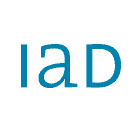Objective methods allow the user to obtain a relatively undistorted image of the object under investigation. But often only the superficial symptoms and not the underlying causes and motivations can be illuminated in detail. Here qualitative methods are the means of choice. Survey techniques represent an important category of methods in the IAD's methods compendium. The different survey techniques can be carried out as dyad or in group constellations, as personal interviews or online surveys. Common to all survey techniques is the aim to discuss a specific topic in varying degrees of detail together with the participants and to capture the subjective view of the respondents. Standardization helps to keep the degree of comparability as well as the reliability of the measurements at a high level.
The interview is a questioning technique in which an interviewer illuminates a concrete topic of choice with usually only one interviewee. The interview can vary from completely open (so-called unstructured interviews), through the specification of a few fixed questions that can be supplemented (semi-structured interview), to completely predefined question sequences (structured interview). The interview results in a qualitative data set, whose preparation (transcription and categorization) usually requires a lot of time.
If the exchange between the respondents is to be enabled, the focus group is the method of choice. Focus groups are used to assess the requirements, needs and feelings of users. In a group discussion, about six to nine users from the potential target group discuss new terms or problems or even the characteristics of a product over a period of about two hours. The group is guided by a moderator and encouraged to discuss the product. The focus group should judge from the user's perspective and reach a common opinion at the end of the discussion. With the help of this method mainly qualitative data concerning the users' expectations and wishes regarding a product are collected.
If a larger sample or quantitative survey results are desired, the questionnaire is a suitable method. Questionnaires can provide explorative insights into a topic area with open questions (no answer categories given) or offer the possibility to carry out a quantitative evaluation with closed questions. Questionnaires can be carried out in paper form or as online questionnaires. Standardised questionnaires fulfil a wide range of statistical quality criteria and offer a high degree of comparability across different applications. Different types of questionnaires are developed, validated and used at the IAD.





